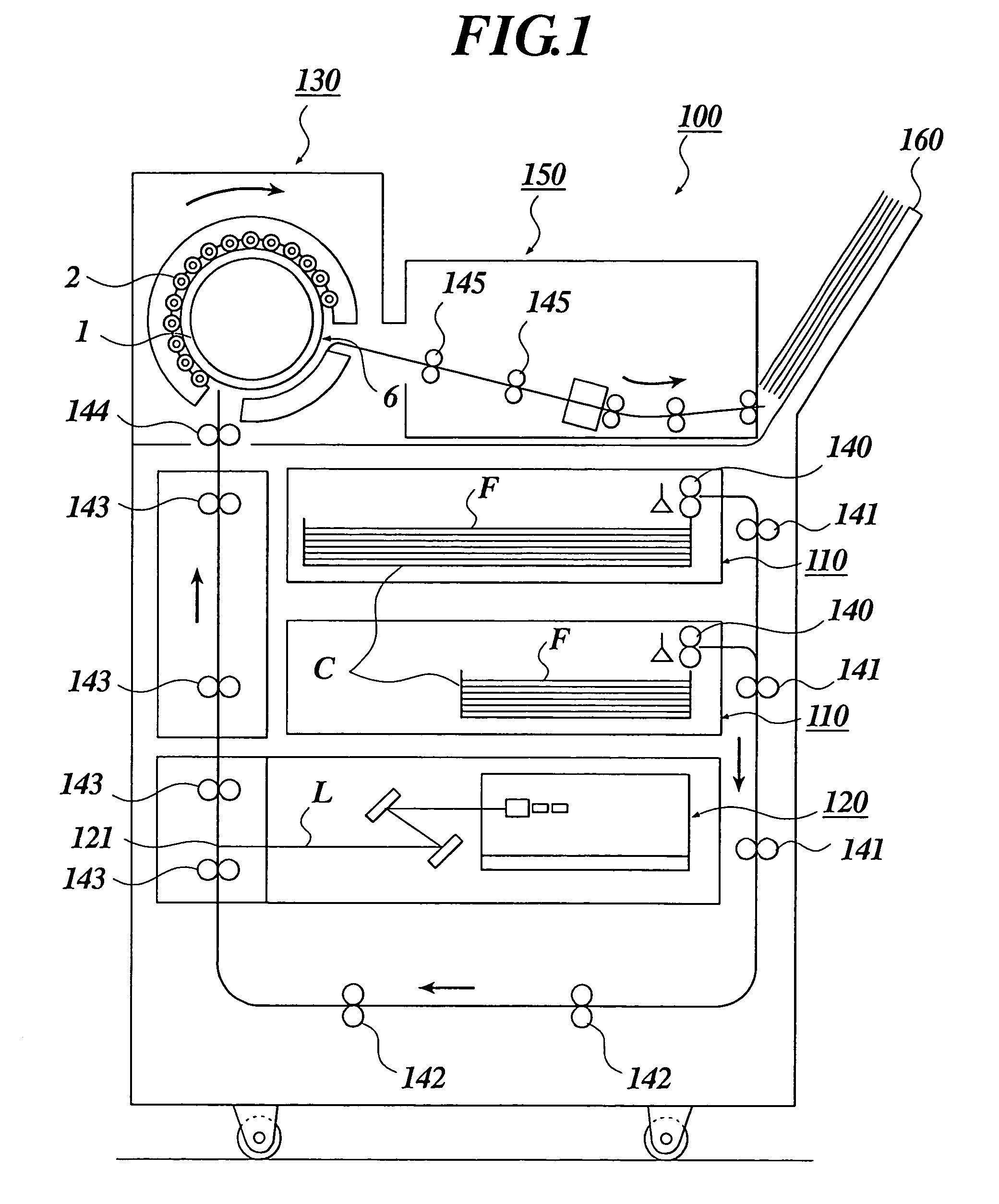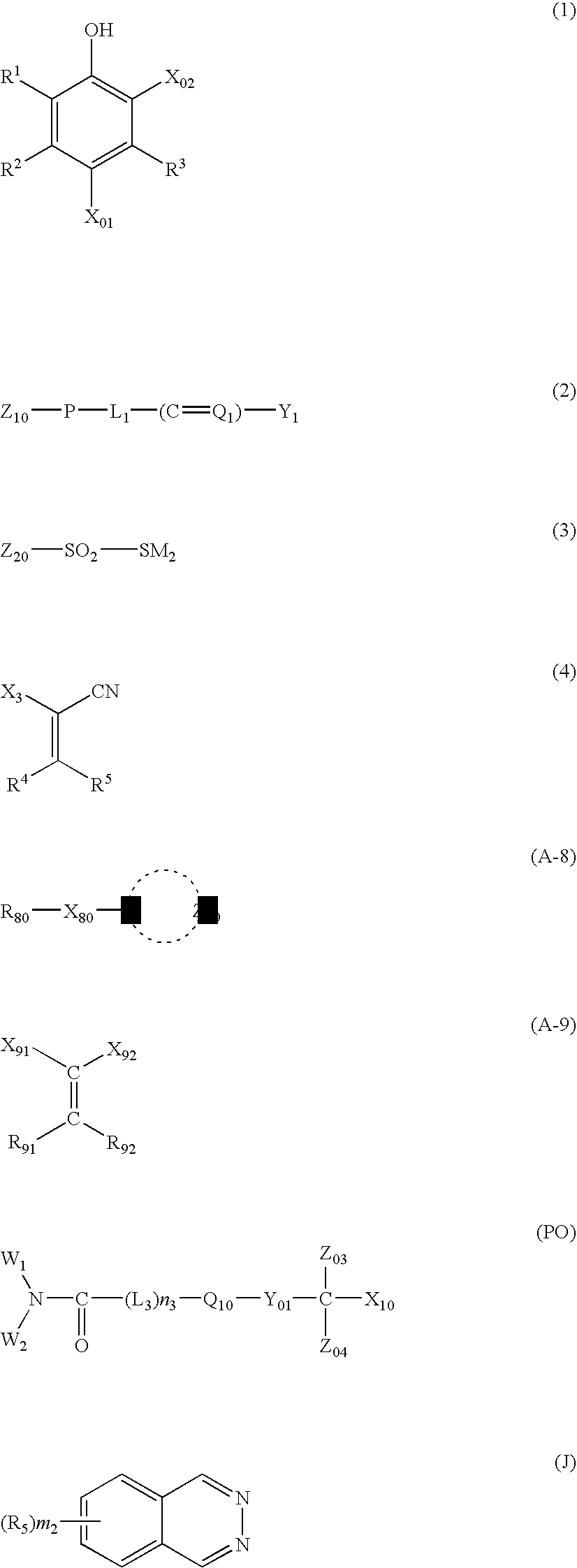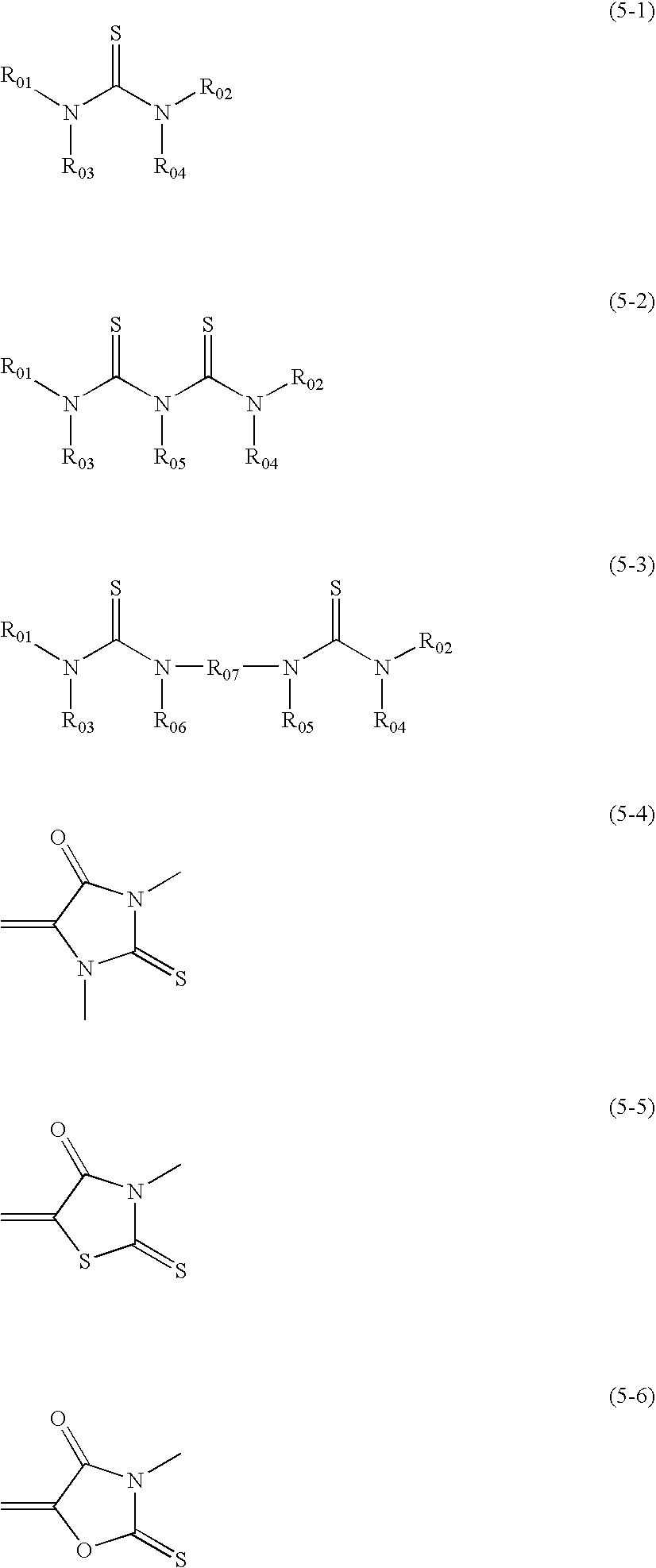Silver salt photothermographic dry imaging material, image recording method and image forming method for the same
a technology of dry imaging and silver salt, which is applied in the direction of diffusion transfer process, photosensitive materials, instruments, etc., can solve the problems of insufficient levels in terms of realizing stable silver color tone, difficult to control developed silver shapes and maintain images, etc., to achieve excellent image color tone and silver image stability, and low photographic fog
- Summary
- Abstract
- Description
- Claims
- Application Information
AI Technical Summary
Benefits of technology
Problems solved by technology
Method used
Image
Examples
example 1
>
[0743]Corona discharge treatment at 0.5 kV.A.min / m2 was given to one side face of a polyethylene terephthalate film base (thickness 175 μm) blue-colored at a density of 0.170, and then using the following under coat coating solution A, an under coating layer a was applied on it such that the thickness of dried film became 0.2 μm. The corona discharge treatment at 0.5 kV.A.min / m2 was similarly given to another face, and then using the following under coat coating solution B, an under coating layer b was applied on it such that the thickness of dried film became 0.1 μm. Subsequently, heat treatment was carried out at 130° C. for 15 min in a heat treating type oven having a film transport apparatus made up of multiple roller groups to make a support.
(Preparation of Under Coat Coating Solution A)
[0744]Copolymer latex solution (270 g) of 30% of n-Butyl acrylate, 20% of t-butyl acrylate, 25% of styrene and 25% of hydroxyethyl acrylate by mass (solid content 30%), 0.6 g of surfactant (UL-...
example 2
>
[0795]Polyethylene terephthalate with an intrinsic viscosity IV=0.66 (measured in phenol / tetrachloroethane=6 / 4 (mass ratio) at 25° C.)(hereinafter abbreviated as PET) was obtained using terephthalic acid and ethyleneglycol according to the standard method. This was pelletized, then dried at 130° C. for 4 hours, melted at 300° C., then extruded from a T type die, and rapidly cooled to make an undrawn film with a thickness such that a film thickness after heat setting is 175 μm.
[0796]This undrawn PET film was vertically drawn to 3.3 times using rollers with different periphery velocity, and then horizontally drawn to 4.5 times using a tenter. At that time, the temperatures were 110° C. and 130° C., respectively. Subsequently, this was heat-set at 240° C. for 20 sec, and relaxed by 4% in a horizontal direction at the same temperature. Subsequently, after slitting a chock portion of the tenter, a knurling was given at both ends, and the film was rolled up at 40 N / cm2 to yield a roll-sh...
example 3
>
[0854]Corona discharge treatment at 0.5 kV·A·min / m2 was given to one side face of a polyethylene terephthalate film base (thickness 175 μm) blue-colored at a density of 0.170, and then using the following under coat coating solution A, an under coating layer a was applied on it such that the thickness of dried film became 0.2 μm. The corona discharge treatment at 0.5 kV·A·min / m2 was similarly given to another face, and then using the following under coat coating solution B, an under coating layer b was applied on it such that the thickness of dried film became 0.1 μm. Subsequently, heat treatment was carried out at 130° C. for 15 min in a heat treating type oven having a film transport apparatus made up of multiple roller groups to make a support.
(Preparation of Under Coat Coating Solution A)
[0855]Copolymer latex solution (270 g) of 30% of n-Butyl acrylate, 20% of t-butyl acrylate, 25% of styrene and 25% of hydroxyethyl acrylate by mass (solid content 30%), 0.6 g of surfactant (UL-...
PUM
| Property | Measurement | Unit |
|---|---|---|
| RH | aaaaa | aaaaa |
| mean particle size | aaaaa | aaaaa |
| non-photosensitive | aaaaa | aaaaa |
Abstract
Description
Claims
Application Information
 Login to View More
Login to View More - R&D
- Intellectual Property
- Life Sciences
- Materials
- Tech Scout
- Unparalleled Data Quality
- Higher Quality Content
- 60% Fewer Hallucinations
Browse by: Latest US Patents, China's latest patents, Technical Efficacy Thesaurus, Application Domain, Technology Topic, Popular Technical Reports.
© 2025 PatSnap. All rights reserved.Legal|Privacy policy|Modern Slavery Act Transparency Statement|Sitemap|About US| Contact US: help@patsnap.com



